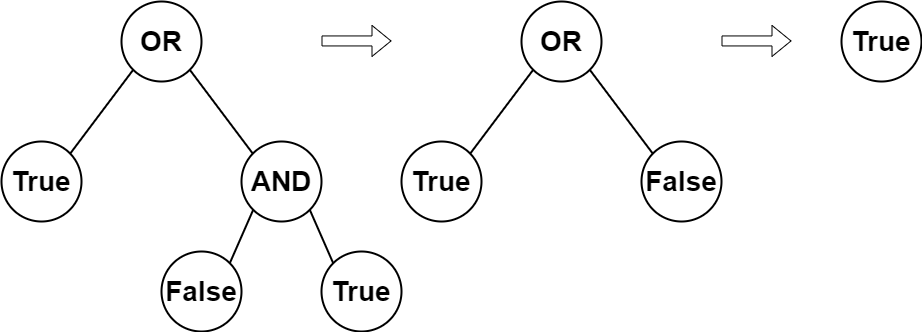⭐️
# 題目敘述
You are given the root of a full binary tree with the following properties:
- Leaf nodes have either the value
0or1, where0representsFalseand1representsTrue. - Non-leaf nodes have either the value
2or3, where2represents the booleanORand3represents the booleanAND.
The evaluation of a node is as follows:
- If the node is a leaf node, the evaluation is the value of the node, i.e.
TrueorFalse. - Otherwise, evaluate the node's two children and apply the boolean operation of its value with the children's evaluations.
Return the boolean result of evaluating the root node.
A full binary tree is a binary tree where each node has either 0 or 2 children.
A leaf node is a node that has zero children.
# Example 1

Input: root = [2,1,3,null,null,0,1]
Output: true
Explanation: The above diagram illustrates the evaluation process.
The AND node evaluates to False AND True = False.
The OR node evaluates to True OR False = True.
The root node evaluates to True, so we return true.
# Example 2
Input: root = [0]
Output: false
Explanation: The root node is a leaf node and it evaluates to false, so we return false.
# 解題思路
# Solution
class Solution { | |
public boolean evaluateTree(TreeNode root) { | |
return dfs(root); | |
} | |
public boolean dfs(TreeNode root) { | |
if(root.val == 3) return dfs(root.left) && dfs(root.right); | |
else if(root.val == 2) return dfs(root.left) || dfs(root.right); | |
return root.val == 1 ? true : false; | |
} | |
} |
單字
** **
!! !!
片語 & 搭配詞
!! !!
